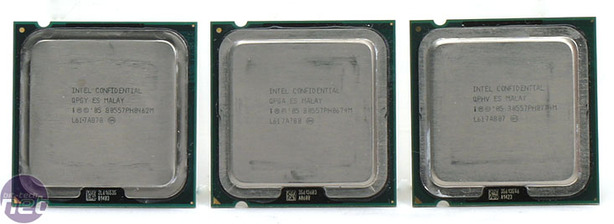
It's finally the day of reckoning...
Today, Intel has officially unveiled the eagerly-anticipated Core 2 Duo product line up, based on the Conroe processor. Earlier in the year, we had the chance to have a look at an engineering sample Core 2 Duo E6700 in a system built by Intel. While today is not the day when Intel's new Core 2 Duo and Core 2 Extreme processors will be available to buy, it is the day that we are finally allowed to publish our own independent benchmarks on systems built and configured by ourselves.Intel is releasing a total of five different processors today, the first in a breed of new desktop processors based on the Core architecture - we will talk about what makes Core tick in due course. Rather than raw speed, Intel has changed its stance on processor design with clear roots shining through from the excellent Pentium M architecture, and the even more impressive Yonah architecture that we looked at in May.

Interestingly, Intel has kept some details of its 2MB Core 2 Duo chips under wraps, because all of the talk has been about Conroe. However, as I'm sure you know, Conroe has a 4MB L2 cache. We're not quite sure what the situation is here, and whether Intel has used a separate core revision with only 2MB of L2 cache or just disabled half of the L2 cache on a Conroe core. However, according to CPU-Z readouts (which can be found later in the review), the 2MB L2 cache chips are codenamed as Allendale. The Core 2 Duo E6400 and E6300 are clocked at a lowly 2.13GHz and 1.86GHz accordingly.
If all goes to plan, you will be able to buy Intel's new processors by Monday 24th July - we are told that large quantities of the chips are currently on their way to retailers worldwide. From that date, Intel's Dual Core processor lineup will look like this:

* - no Virtualisation Technology

MSI MPG Velox 100R Chassis Review
October 14 2021 | 15:04








Want to comment? Please log in.